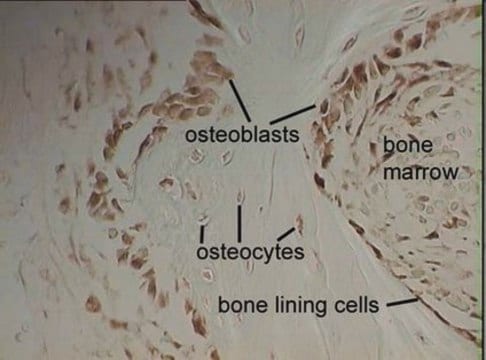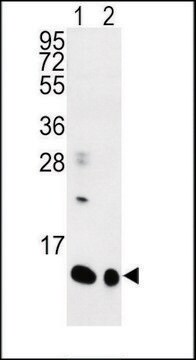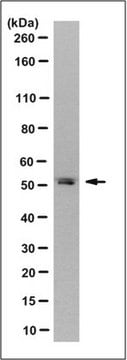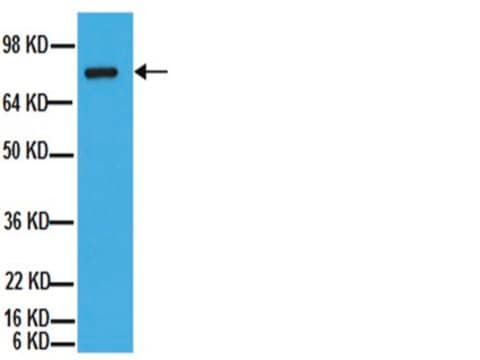MAB3291
Anti-H-Ras Antibody, clone 7D7.2
clone 7D7.2, Chemicon®, from mouse
Synonym(e):
Anti-C-BAS/HAS, Anti-C-H-RAS, Anti-C-HA-RAS1, Anti-CTLO, Anti-H-RASIDX, Anti-HAMSV, Anti-HRAS1, Anti-RASH1, Anti-p21ras
About This Item
Empfohlene Produkte
Biologische Quelle
mouse
Qualitätsniveau
Antikörperform
purified antibody
Antikörper-Produkttyp
primary antibodies
Klon
7D7.2, monoclonal
Speziesreaktivität
rat, mouse, human
Hersteller/Markenname
Chemicon®
Methode(n)
ELISA: suitable
western blot: suitable
Isotyp
IgG2b
NCBI-Hinterlegungsnummer
UniProt-Hinterlegungsnummer
Versandbedingung
wet ice
Posttranslationale Modifikation Target
unmodified
Angaben zum Gen
human ... HRAS(3265)
Spezifität
Immunogen
Anwendung
Zelluläre Signaltransduktion
MAP-Kinasen
ELISA
Optimal working dilutions must be determined by end user.
Physikalische Form
Lagerung und Haltbarkeit
WARNING: The monoclonal reagent solution contains 0.1% sodium azide as a preservative. Due to potential hazards arising from the build up of this material in pipes, spent reagent should be disposed of with liberal volumes of water.
Sonstige Hinweise
Rechtliche Hinweise
Haftungsausschluss
Sie haben nicht das passende Produkt gefunden?
Probieren Sie unser Produkt-Auswahlhilfe. aus.
Lagerklassenschlüssel
10 - Combustible liquids
WGK
WGK 2
Flammpunkt (°F)
Not applicable
Flammpunkt (°C)
Not applicable
Analysenzertifikate (COA)
Suchen Sie nach Analysenzertifikate (COA), indem Sie die Lot-/Chargennummer des Produkts eingeben. Lot- und Chargennummern sind auf dem Produktetikett hinter den Wörtern ‘Lot’ oder ‘Batch’ (Lot oder Charge) zu finden.
Besitzen Sie dieses Produkt bereits?
In der Dokumentenbibliothek finden Sie die Dokumentation zu den Produkten, die Sie kürzlich erworben haben.
Unser Team von Wissenschaftlern verfügt über Erfahrung in allen Forschungsbereichen einschließlich Life Science, Materialwissenschaften, chemischer Synthese, Chromatographie, Analytik und vielen mehr..
Setzen Sie sich mit dem technischen Dienst in Verbindung.







